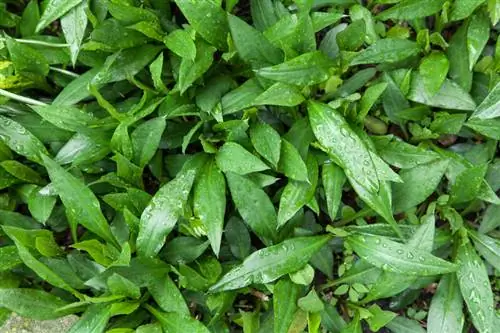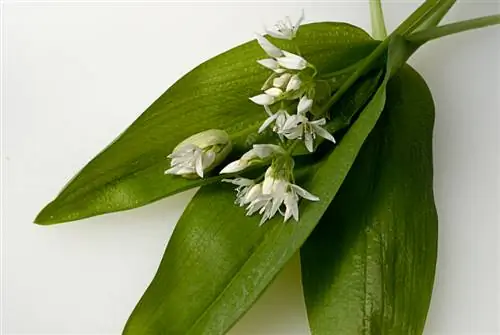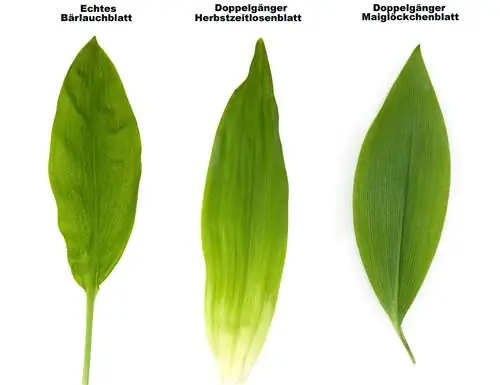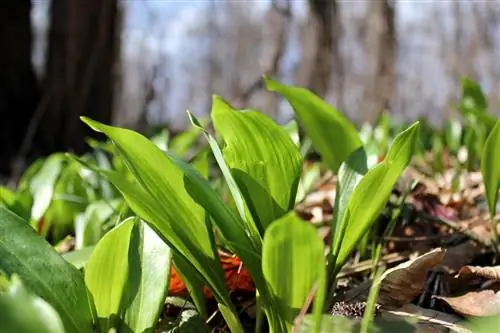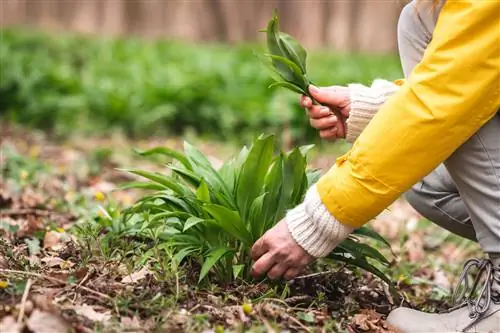- Author admin [email protected].
- Public 2023-12-16 16:46.
- Last modified 2025-01-23 11:20.
In spring, fresh wild garlic from the nearby forest or from your own garden is an important seasonal spice in many European households. If you are unsure about the exact difference between wild garlic and similar-looking plants, it can be dangerous.
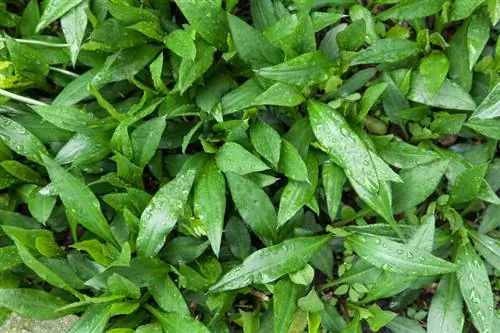
How can you distinguish wild garlic from poisonous plants?
Wild garlic can easily be confused with lily of the valley, autumn crocus or spotted arum. The distinguishing features are the garlic-like smell of ground wild garlic, the longitudinal grain of the leaves and the parallel leaf veins. If in doubt, you should avoid wild wild garlic and buy it commercially.
Identifying wild garlic by its appearance and smell
The leaves and flowers of wild garlic reach a height of around 20 to 50 centimeters and grow out of an elongated bulb in the ground when the snow melts in March. The fresh green leaves taper at the ends and have a longitudinal grain. In May, the white wild garlic flowers appear in round balls, so that entire clearings in the forest are often transformed into a green and white wild garlic carpet. You can identify wild garlic relatively clearly if you crush the leaf and rub it between your fingers. Wild garlic gives off a smell that is noticeably reminiscent of garlic. There are risky possibilities for wild garlic to be confused with poisonous neighbors in the form of:
- Lily of the valley
- Autumn crocuses
- younger, unspotted specimens of the spotted arum
The difference between wild garlic and lily of the valley
Visually, the leaves of lily of the valley and wild garlic differed only slightly. It would be easier to identify precisely when both plants are flowering in May, but wild garlic is usually preferably harvested before the wild garlic blooms due to its even more aromatic taste. The risk of confusion can only be minimized by smelling the leaves. If you rub several leaves between your fingers one after the other to determine the type of plant, you should wash your hands well in between. Otherwise, you could still confuse the two species if, when taking a lily of the valley sample, you perceive the garlic smell clinging to your hands from a previous sample with wild garlic as belonging to the current sample.
Autumn crocus and wild garlic in comparison
The leaves of autumn crocuses that sprout in spring also look deceptively similar to those of wild garlic and can sometimes grow close to each other. To distinguish the highly poisonous autumn crocus from the tasty wild garlic, an odor test of the crushed leaves is necessary. While wild garlic smells strongly of garlic, the leaves of the autumn crocus are almost odorless. Since both plant species can also grow in mixed stands, even experienced wild garlic collectors should be very careful when searching.
The Spotted Arum
Confusing wild garlic with the young leaves of the spotted arum would also be fatal, as eating them can lead to fatal poisoning. However, young leaves of the arum, which do not yet have the characteristic arrow shape, can also be visually distinguished from wild garlic. The leaf veins do not run longitudinally like wild garlic, but in irregular directions and do not have parallel veins.
Tip
If in doubt, inexperienced herb collectors should stay away from wild garlic. Wild garlic from your own planting or from the dealer usually largely eliminates the risk of mix-ups.

